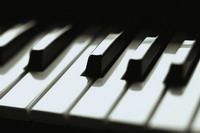Piano Sheets > Horace Silver Sheet Music > Song for My Father (ver. 2) Piano Sheet
Song for My Father (ver. 2) by Horace Silver - Piano Sheets and Free Sheet Music

About the Song
Other avaliable versions of this music sheet: Version 1 Version 2
Song for My Father is a 1964 album by the Horace Silver Quintet, released on the Blue Note label. The album was inspired by a trip that Silver had made to Brazil. The cover artwork features a photograph of Silver's father, John Tavares Silver, to whom the title song was dedicated.
"My mother was of Irish and Negro descent, my father of Portuguese origin. He was born on the island of Maio, one of the Cape Verde Islands" (Horace Silver, quoted in Leonard Feather's original liner notes)
A jazz standard, "Song for My Father" is here in its original form. It is a Bossa Nova in F-minor with an AAB head. On the head, a trumpet and tenor saxophone play in harmony. The song has had a noticeable impact in pop music. The opening bass piano notes were borrowed by Steely Dan for their song "Rikki Don't Lose That Number", while the opening horn riff was borrowed by Stevie Wonder for his song "Don't You.
Download this sheet!
About the Artist

Random article
How to read sheet music How to read sheet music
Reading piano sheet music is no simple thing. For it first we require to know the individual elements of the composition itself in order to read sheet music. You must make sure that you are familiar with that particular composition's language before you tackle the entire piece.
In order to grasp the intent and nuances of the piece quickly for reading piano sheet music following steps are to be considered:-
1> To start with have a look over entire composition to get the feel of the length and style of the sheet music. This first run through is just to have a quick overview of the composer's work. This will slowly prepare you to read the sheet music.
(More...)
